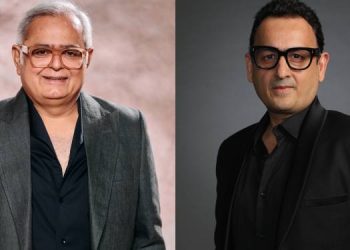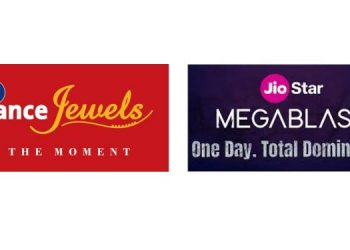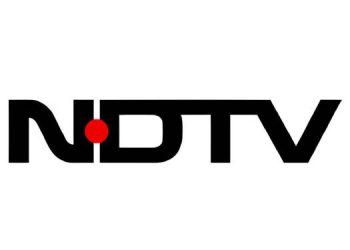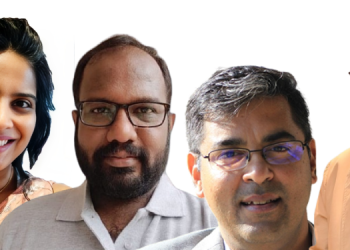Mumbai: Adjusting content, marketing strategies in a world where the worlds of TV and digital are merging pays rich dividends. Using television as a medium helps build trust and TV also helps if one wants to go mass. At the same time for a brand to succeed it has to be clear on the role that using a medium should play. TV does help with deep penetration and for certain TGs social media is useful. In a world where TV and digital are merging creating cross screen content is the key to succeed.
On the second day of Goafest 2024 there was a Fireside Chat by Viacom18 featured industry veterans – Ankit Kapoor, Head of Marketing and International Business at Parle Agro; Mahesh Shetty, National Sales Head at Viacom18, and Navin Khemka, CEO of South Asia of Essence Mediacom. Conducting the conversation was Shibani Gharat, an anchor and associate executive producer. Mahesh discussed the evolution of Bigg Boss, highlighting how the show has expanded to include digital creators, thereby increasing its relevance. This has resulted in the followers of the digital influencers becoming fans of Bigg Boss. In addition the TV celebrities have become popular in the digital space. He emphasised the importance of catering to a diverse set of consumers and noted that the core principle of creating mass content remains unchanged. Over the past year, Shetty’s team has merged the television and digital divisions to better achieve their goal of reaching a broad audience.
He also spoke about the importance of doing research for fiction shows. He noted that content must resonate with the masses and added that creating niche content is easy but creating mass content is hard. “We look at creating content for a diverse audience set. Earlier there were different teams for television and digital. Now the teams have merged.” Looking at things from an advertiser point of view he noted that no mass brand can ignore TV. He gave the example if Mamaearth which scaled from Rs. 110 crores of revenue to Rs. 1700 crores of revenue. That is in part because they invested month on month on TV. He added that using television gives consumers the confidence to trust a brand. He offered the example of Acko Insurance. In five years it has gone from a $300 million valuation to a $1.5 billion valuation. The company investd in sports, GECs and this built trust.
He pointed out that since the consumer is multi screen both content and advertising should follow that route. He spoke about the role that digigal has to play in creating shoulder content around the main content of TV. For instance one sees gaming on the IPL.
Kapoor though said that trust is not married to a platform. Trust comes from things like brand purpose. To this Shetty agreed that what an organisation is doing plays a huge role in gaining the trust of the consumer. But he added that when a brand targets the family one can trust the content on TV. It will not be edgy.
In response to a question about creating widespread brand love, Kapoor underscored the necessity for marketing teams and brand managers to have a clear understanding of the role each medium plays. He pointed out that only with this clarity can brands successfully cultivate and maintain strong brand loyalty, saying, “Only through clarity are brands able to achieve what they set out to in terms of brand love. Brand teams have to be clear on how to use thsse mediums otherwise we will never get the right results.” For his company depending on the stage of each brand and the objective the role will be defined for a medium. TV helps you go deep but for certain audience segments social media like Youtube comes in. Another part of the equation is being aware of the organisations capability of managing this complexity and all these platforms. Also is there the creative width to bring alive the brands core message across platforms?
Marketers he said must hold up a mirror before they go ahead and start experimenting. He said that the platforms and agencies have role in simplifying things for the client by explaining to them about the KPIs that can be chased. Case studies can be provided. Getting the structure in place is where the wheel starts turning. CMOs should try and push boundaries. He offered the example of Nike. They use all mediums. So for instance TV is for reach. On ground is used to give a feel for their products. Social is used to drive engagement. “They are iconic when it comes to leveraging multi-platform and building brand love across every platform.”
Khemka noted that even when one talks about having a multimedia strategy the brief is consumer first. Teams today give clients a holistic plan that combines TV and digital. The time spent on media he noted has gone up from two hours to four to five hours. This includes TV, OTT, social media etc. He said that brands still have to look at the three Cs. The first is category and seeing the relevance of being in a medium for the category. The second C is Competition and one has to see the share of voice, strategy etc. The third C is content. “What do you want to give the consumer? Is it a promo, is it about brand building? Then you create a holistic approach.”
He noted that the role of mass media has changed for digital brands over the years. 10 years they used traditional media a lot because digital advertising was new. Then the digital ad business scaled. But D2C brands find that beyond a point digital does not help them scale. It is fine to only use digital to get to Rs. 10 crore revenue. But to get to Rs. 10,000 crores revenue an omni channel approach is key. When asked about measurement n digital he said that the metrics are well defined regardless of what is doing like a search campaign. Clicks, downloads can be measured. “Today you know if a campaign is working in 48 hours. You see the audience signals and then adapt accordingly.” Once can tweak what one is doing like the influencer strategy.
Kapoor though raised the issue of ad fraud and noted the danger of bots. He noted that quite a bit of digital ad monies continue to be wasted and on the client side not many are aware of this issue. The issue is only discussed in niche pockets. He also noted that one must not chase tech but rather chase the creativity behind the tech. That will ensure that an omnichannel strategy will work.

















